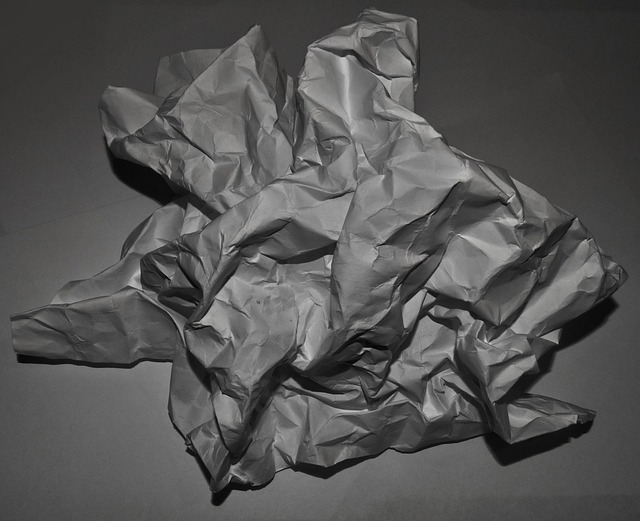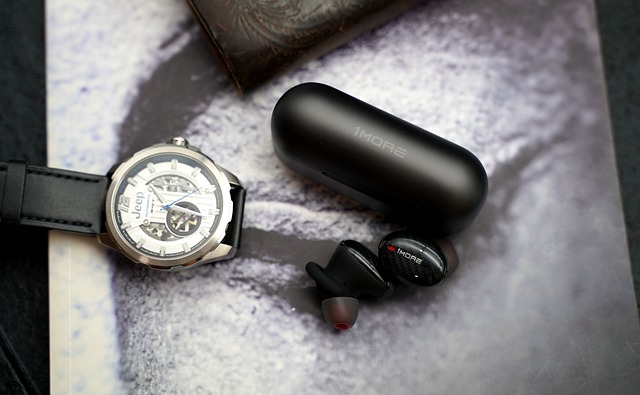Wrinkles are natural signs of aging, primarily caused by environmental damage, lifestyle choices, and genetics. They come in various types, with sun exposure being a major contributor. Effective wrinkle reduction strategies include a healthy lifestyle (sun protection, exercise, diet, hydration, stress management), topical anti-aging products (retinol, hyaluronic acid, peptides, niacinamide), peptides/proteins for collagen stimulation, laser therapy, non-invasive treatments (dermal fillers, Botox), and holistic practices. The future of wrinkle reduction looks promising with advanced technologies like LED/laser treatments and AI personalization.
Uncover the secrets to tackling wrinkles and fine lines with our comprehensive guide to anti-aging. From understanding the causes and types of skin changes to exploring a range of effective treatments, this article covers it all. Discover lifestyle adjustments that prevent age-related skin issues, topically applied products for wrinkle reduction, and innovative procedures like peptides, laser therapy, and non-invasive options. Learn how dietary choices and future trends can also enhance your anti-aging journey, leaving you with healthy, youthful skin.
Understanding Wrinkles and Fine Lines: Causes and Types

Wrinkles and fine lines are a natural part of aging, but their appearance can be a source of concern for many. Understanding the causes and types of these skin changes is the first step in addressing them effectively. Wrinkles can form due to various factors, primarily related to environmental damage, lifestyle choices, and inherent genetic predispositions. Sun exposure is one of the primary contributors, as UV rays break down collagen and elastin fibers, leading to loss of skin elasticity and the development of fine lines and wrinkles over time.
There are different types of wrinkles, each with distinct characteristics. Dynamic wrinkles, for instance, are temporary lines that form when facial muscles contract, such as frown lines or crow’s feet. Static wrinkles, on the other hand, are permanent depressions in the skin caused by a loss of elasticity and collagen. Surface wrinkles are shallow and often improve with moisturization, while deep wrinkles penetrate deeper into the skin layers and require more intensive treatments for wrinkle reduction.
The Role of Lifestyle in Preventing Age-Related Skin Changes

A healthy lifestyle plays a significant role in preventing and minimizing age-related skin changes, including wrinkles and fine lines. Adequate sun protection is paramount; UV rays are the primary culprit behind skin aging. Regular exercise enhances blood circulation, which brings essential nutrients to the skin, keeping it hydrated and promoting cell regeneration. A balanced diet rich in antioxidants, vitamins, and minerals supports collagen production, a protein crucial for maintaining skin elasticity and reducing the visibility of wrinkles.
Additionally, staying hydrated is vital for skin health. Drinking enough water helps maintain skin moisture, preventing dryness and fine lines. Stress management is another often-overlooked factor; chronic stress can accelerate aging by influencing hormone levels and compromising skin health. Adopting a stress-reducing routine, such as meditation or yoga, can contribute to overall skin rejuvenation and wrinkle reduction.
Topical Anti-Aging Products: Ingredients for Wrinkle Reduction

Topical anti-aging products have emerged as a powerful tool in the quest for wrinkle reduction. These formulations are designed to address specific signs of aging, targeting fine lines and wrinkles with a multitude of active ingredients. Key players in this category include retinol, a derivative of vitamin A, which stimulates collagen production and improves skin texture. Hyaluronic acid is another popular choice, as it hydrates the skin, plumping up wrinkles from within.
Peptides, short chains of amino acids, are also commonly used to signal skin cells to produce more collagen and elastin. Additionally, ingredients like niacinamide (vitamin B3) offer anti-inflammatory benefits and strengthen the skin barrier, contributing to a reduced appearance of fine lines and wrinkles over time.
Peptides and Proteins: Unlocking the Power to Repair Skin

Peptides and proteins are powerful allies in the battle against aging skin. These molecular building blocks play a crucial role in keeping our complexions youthful and radiant. By stimulating collagen production, peptides can help to reduce the appearance of wrinkles and fine lines, a key aspect of wrinkle reduction strategies. Collagen is a natural protein that provides structure and elasticity to our skin, and as we age, its production decreases, leading to signs of aging.
Topical creams containing specific peptides and proteins can mimic the body’s natural processes, encouraging skin renewal and repair. Some peptides have been shown to penetrate deeper layers of the skin, interacting with cells to stimulate collagen synthesis. This not only improves skin texture but also enhances overall skin health, resulting in a more youthful and vibrant appearance. The right combination of these powerful ingredients can be a game-changer in any anti-aging routine for effective wrinkle reduction.
Laser Therapy for Advanced Wrinkle Treatment

Laser therapy has emerged as a game-changer in advanced wrinkle treatment, offering effective solutions for significant skin concerns. This non-invasive procedure utilizes concentrated beams of light to target and break down collagen and elastin fibers that have been damaged over time by factors like sun exposure and aging. By stimulating the production of new, healthy collagen, laser therapy can significantly improve skin texture, reduce the appearance of fine lines and wrinkles, and enhance overall skin tone for a more youthful look.
Modern laser technologies, such as fractional lasers, provide precise targeting without damaging the surrounding skin. This ensures minimal downtime and discomfort compared to traditional ablative lasers. With multiple treatment sessions, individuals can achieve remarkable wrinkle reduction, resulting in a rejuvenated and refreshed complexion.
Non-Invasive Procedures: Fillers, Toxins, and More

Non-invasive procedures have become a popular choice for those seeking effective wrinkle reduction without the downtime and potential risks associated with surgery. One such treatment is dermal fillers, which involve injecting a substance into the skin to enhance its appearance. These fillers can plump up deep wrinkles and fine lines, providing immediate results that can last for several months. Common filler materials include hyaluronic acid, collagen, and synthetic polymers, each offering unique benefits and longevity.
Another non-invasive option is neurotoxin injections, commonly known as Botox. This treatment works by paralyzing muscle movement, preventing the formation of dynamic wrinkles caused by facial expressions. The effects are not permanent, but regular treatments can significantly reduce the appearance of fine lines and crow’s feet around the eyes and mouth. Combined with other techniques like chemical peels or laser therapy, these non-invasive procedures offer a comprehensive approach to achieving youthful-looking skin.
Lifestyle Changes for Healthy, Youthful Skin

Adopting a healthy lifestyle is an often-overlooked aspect of anti-aging and can significantly impact the appearance and overall health of your skin. By making some simple yet effective changes, you can promote youthful-looking skin and even reverse some signs of aging. One key factor is staying hydrated; drinking ample water helps maintain skin elasticity and a plump, radiant complexion. Additionally, incorporating antioxidants into your diet through fruits and vegetables can protect the skin from environmental damage, reducing the formation of wrinkles and fine lines.
Regular exercise is another powerful tool in the fight against wrinkles. It increases blood flow, delivering essential nutrients to the skin while also boosting collagen production, which keeps skin firm and supple. Moreover, managing stress levels is crucial; high-stress situations can lead to accelerated aging, so finding ways to relax and unwind may help slow down the appearance of age-related skin changes, focusing on a holistic approach to wrinkle reduction.
Nutritional Support for Anti-Aging: Foods and Supplements

Nutritional support plays a vital role in anti-aging strategies, particularly when it comes to addressing wrinkles and fine lines. Incorporating specific foods and supplements into your diet can help stimulate collagen production, which is essential for maintaining skin elasticity and a youthful appearance. Foods rich in antioxidants like berries, leafy greens, and nuts are renowned for their wrinkle-fighting properties as they protect the skin from environmental damage caused by free radicals.
Additionally, certain supplements such as vitamin C, vitamin E, and retinol are popular choices for anti-aging regimens. Vitamin C is a powerful antioxidant that aids in collagen synthesis, while vitamin E nourishes the skin and protects it from oxidative stress. Retinol, a form of vitamin A, has been shown to reduce fine lines and wrinkles by encouraging cell turnover and promoting the growth of new skin cells.
Future Trends in Anti-Aging Technology

The future of anti-aging technology holds immense promise for addressing wrinkles and fine lines, offering more personalized and effective solutions than ever before. One promising trend is the rise of advanced skincare devices that utilize light therapy, such as LED and laser treatments. These non-invasive procedures have already shown significant results in wrinkle reduction and skin rejuvenation. With continued research and development, we can expect even more targeted and precise technologies to emerge, allowing for tailored anti-aging regimens.
Additionally, the integration of artificial intelligence (AI) into skincare is set to revolutionize the industry. AI-driven algorithms can analyze individual skin types, patterns, and concerns, providing customized treatment plans. This level of personalization will enhance the effectiveness of anti-aging treatments, catering specifically to each person’s unique needs. As technology advances, we can look forward to a future where wrinkle reduction becomes more accessible, efficient, and tailored to our specific skin goals.
